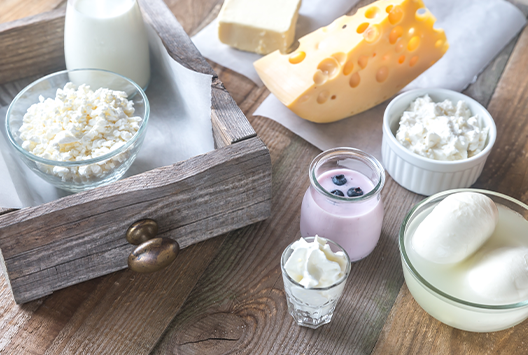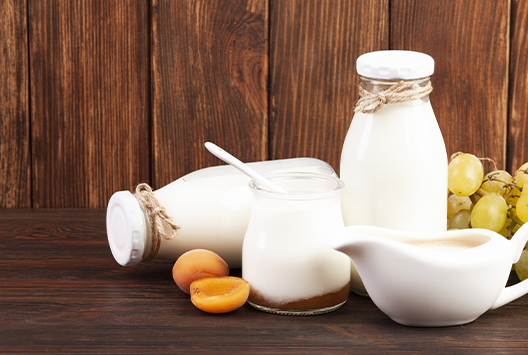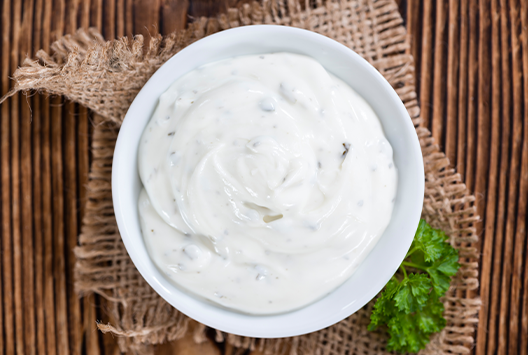
Elevate Your Meals: Try Adding Sour Cream To These Recipes
Similar
Sour cream is a beloved dairy delight that is made by fermenting cream. With its velvety texture and slightly tang flavor, it brings a distinctive twist to various dishes. This versatile ingredient finds its way into countless recipes — from savory dips and sauces to cakes and desserts. Its unparalleled flavor makes it a must-have in every kitchen.
Chefs and home cooks worldwide have been using sour cream since the 1800s, though its exact origin is unknown. It’s believed that the fermentation process used to make sour cream was first discovered in Eastern Europe, and the product quickly spread worldwide.
In the United States, German and Eastern European immigrants first popularized sour cream by using it in various recipes. Today, dairy and beverage companies around the world produce sour cream, a common ingredient in many dishes.
What does sour cream taste like?
Sour cream, with its tangy flavor and creamy texture, brings a delightful twist to any dish. Its flavor combines tartness and creaminess, with a subtle acidic finish that further adds to its uniqueness.
The versatility of sour cream shines through in both savory and sweet recipes. It enhances the flavors of dips, sauces, soups, and other savory delights. At the same time, it has the ability to transform delectable desserts like cakes and pies into rich delights that will win over crowds every time.
Which common recipes use sour cream?
As mentioned earlier, sour cream is a highly versatile ingredient in various recipes. Here are a few everyday food recipes that work well with sour cream.
1. Baked Potato
Baked potatoes are a classic comfort food that many people enjoy in various ways. Sour cream is one of the most popular toppings for baked potatoes and can be added to the top of the potato before baking or served as a side. This creamy topping adds a tangy flavor and a rich texture to the potato.
2. Enchiladas
Enchiladas are a Mexican dish that consist of corn tortillas filled with cheese and other ingredients, then topped with a salsa-based sauce and baked. Sour cream is often added to the top of the dish before baking to give it a creamy flavor and texture.
3. Cheesecake
Cheesecake is a classic dessert that is often topped with a layer of sour cream. The sour cream adds a tangy flavor and a creamy texture to the cake. It also helps balance out the sweetness of the dish.
4. Chipotle Bowls
If you’re a fan of Mexican food, then you’ve surely tried making chipotle bowls at home. And you simply cannot make chipotle bowls without sour cream. It is a classic topping that perfectly complements the spices and adds a tangy contrast to the flavors present. Assemble your bowl with cilantro rice, chipotle chicken, black beans, salsa, guacamole, and a dollop of sour cream - and thank us later.
5. Beef Stroganoff
Adding a spoonful of sour cream to recipes that are creamy in nature, such as beef stroganoff, can elevate the dish, thanks to its tangy richness. For best results, incorporate the sour cream while cooking. In the case of beef stroganoff, simply add 1-2 tablespoons of sour cream towards the end of the cooking process, along with the cooking cream. This will allow the sour cream to blend well with the other ingredients.
6. Fruit Tarts
If you’re a fan of fruit tarts, then you must try making them with sour cream. The next time you want to impress a crowd, try incorporating sour cream into the filling, which is often made with cream cheese, sugar, vanilla, lemon juice, and sometimes jam. Adding sour cream to the filling creates a creamy and tangy base for the fruit, enhancing the overall flavor of the dessert.
A final sour and creamy note
From savory dips and sauces to sweet desserts, sour cream can add a creamy texture and delicious tangy flavor to any meal. Whether enjoyed solo or incorporated into various recipes, sour cream promises to deliver a delicious and distinctive taste that will enhance your culinary experience.
Baladna is a trusted dairy and beverage company in Qatar with one of the largest cattle farms in the region. We guarantee consistent quality across all our products. Try our sour cream today!



